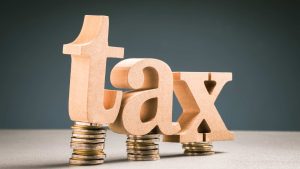Last Updated on: 7th February 2025, 05:08 am
Are you wondering how much your car tax will be in 2025? With upcoming changes to Vehicle Excise Duty (VED), many UK drivers are curious about how these adjustments will affect their budgets.
Whether you own an electric vehicle, a petrol car, or a high-emission diesel, understanding the new tax rules is crucial to avoid unexpected costs.
What factors determine your car tax, and how can you calculate it accurately? Will electric vehicles remain tax-exempt, or are changes on the horizon?
This blog answers these key questions, helping you prepare for the 2025 car tax changes and stay informed about the evolving road tax system.
What is Vehicle Excise Duty (VED)?

Vehicle Excise Duty (VED), commonly referred to as car tax or road tax, is a mandatory payment for vehicles registered in the UK.
It’s a tax levied by the UK government to maintain and improve the country’s road infrastructure. The amount you pay depends on your vehicle’s specific characteristics, primarily its carbon dioxide (CO2) emissions, type of fuel, and year of registration.
For vehicles registered after 2001, CO2 emissions determine the VED rate. Cars emitting lower emissions fall into lower tax bands and enjoy reduced rates, while high-emission vehicles face higher charges. Electric and ultra-low emission vehicles (ULEVs) often qualify for exemptions or reduced rates.
VED is split into two parts:
- First-Year Rate: Based on CO2 emissions for new vehicles.
- Standard Rate: A flat annual fee applied after the first year, varying by fuel type and other criteria.
Understanding VED is crucial for budgeting your vehicle expenses and complying with legal obligations.
How is Car Tax Calculated in the UK?
Car tax in the UK is calculated based on several factors, primarily focusing on the vehicle’s CO2 emissions, fuel type, and registration date.
This system encourages the use of environmentally friendly vehicles while discouraging high-emission cars. For vehicles registered after April 1, 2017, the calculation process follows a two-step system:
- First-Year Rate: Determined by the car’s CO2 emissions, with higher rates applied to cars emitting more CO2. For example, zero-emission vehicles like electric cars often have a £0 first-year tax, while petrol or diesel cars with high emissions could face charges exceeding £2,000.
- Standard Rate: A fixed annual fee applicable from the second year onward. Electric vehicles typically remain exempt, while petrol and diesel cars usually incur a flat rate of around £180 to £200 per year.
For older vehicles (registered before 2017), the tax bands differ slightly, relying on alternative emission thresholds.
Vehicles costing over £40,000 also face a luxury car surcharge of £355 annually for the first five years. This tailored system ensures fair taxation and promotes cleaner driving habits.
What are the VED Bands for 2025?
The Vehicle Excise Duty (VED) bands for 2025 reflect the UK government’s ongoing commitment to reducing carbon emissions and promoting greener transportation.
These bands determine how much tax you will pay annually, depending on your vehicle’s CO2 emissions and fuel type.
Here’s a breakdown of the key VED band changes expected in 2025:
- Zero-Emission Vehicles (ZEVs): Electric cars will no longer be fully exempt. A standard rate, likely around £10 to £20 annually, will be introduced to cover their road usage costs.
- Low-Emission Vehicles: Cars emitting less than 50g/km of CO2 will fall into a lower tax band, encouraging the adoption of plug-in hybrids and similar vehicles.
- High-Emission Vehicles: Cars emitting over 151g/km of CO2 will face significantly higher first-year rates, potentially exceeding £2,500.
- Diesel and Petrol Cars: These vehicles will experience modest increases in both the first-year and standard rates, particularly if their emissions exceed the government’s thresholds.
The VED bands aim to incentivize the use of cleaner vehicles while placing a higher financial burden on cars that contribute more to environmental pollution.
Understanding your vehicle’s emissions and corresponding tax band is essential to avoid unexpected costs in 2025.
How Much Will My Car Tax Be in 2025?

Calculating your car tax for 2025 depends on your vehicle’s CO2 emissions, fuel type, and registration date. With the UK government tightening regulations, many drivers will notice changes in their annual tax bills.
Here’s how you can estimate your car tax for 2025:
- For Electric Vehicles (EVs): Starting in 2025, EV owners will no longer enjoy full tax exemption. A minimal annual fee, likely between £10 and £20, will apply.
- For Low-Emission Vehicles: Cars emitting 1–50g/km of CO2, such as plug-in hybrids, will have lower first-year rates (around £0–£50) and standard annual rates of approximately £150–£170.
- For Medium to High-Emission Vehicles: Petrol and diesel vehicles with emissions between 76–150g/km will face first-year charges ranging from £140 to £900, with a standard annual rate near £200.
- For High-Emission Vehicles: Cars emitting over 150g/km will encounter first-year taxes exceeding £2,000 and a standard rate of around £200.
Additionally, vehicles valued over £40,000 will incur a luxury car surcharge of £355 annually for the first five years.
To determine your exact car tax, check your VED band using an online calculator or your car’s emissions data. Understanding these changes can help you budget effectively and potentially switch to a greener vehicle.
Will Electric Vehicles Still Be Exempt from Tax in 2025?
From 2025, electric vehicles (EVs) will no longer be completely exempt from Vehicle Excise Duty (VED). This marks a significant shift in UK car tax policy, as EV owners have previously enjoyed zero road tax to encourage the transition to greener transportation.
The changes for EVs are as follows:
- First-Year Rate: EVs will remain exempt from the first-year rate, providing a continued incentive for new buyers.
- Standard Rate: From the second year onward, EVs will attract a modest tax of around £10 to £20 annually, compared to the current £0 rate.
- Luxury Car Surcharge: EVs costing over £40,000 will incur the additional £355 annual surcharge for the first five years.
Despite these new charges, EVs will still offer a financial advantage over petrol and diesel vehicles, which face higher tax rates due to their emissions.
This tax adjustment is part of a broader government strategy to ensure fairness in road tax collection while continuing to support the adoption of low-emission vehicles. Switching to an EV remains a cost-effective and eco-friendly choice.
How Will CO2 Emissions Affect Your Car Tax?
CO2 emissions play a pivotal role in determining your car tax, as the UK government uses emission levels to promote environmentally friendly vehicles and discourage polluting ones.
Vehicles are categorized into VED bands based on their CO2 emissions, with higher polluters incurring steeper tax rates.
Here’s how emissions impact your car tax:
- Low-Emission Vehicles: Cars emitting 1–50g/km of CO2 fall into lower tax bands. These vehicles benefit from reduced first-year rates, often between £0 and £50, and a standard annual rate of about £150–£170.
- Medium-Emission Vehicles: Vehicles emitting 51–150g/km face moderate first-year charges, ranging from £140 to £900, with standard rates around £200 per year.
- High-Emission Vehicles: Cars with emissions above 151g/km attract substantial first-year rates, sometimes exceeding £2,000, followed by a standard rate of approximately £200 annually.
The government is also increasing the tax burden on petrol and diesel vehicles to accelerate the shift toward electric and hybrid alternatives.
Monitoring your vehicle’s CO2 emissions is essential for accurately estimating your car tax and understanding its environmental impact.
Are Petrol and Diesel Cars Facing Higher Tax Rates?

Yes, petrol and diesel cars are set to face higher tax rates in 2025 as part of the UK government’s strategy to reduce carbon emissions and promote greener alternatives. These increases will affect both the first-year and standard annual rates.
Key changes include:
- First-Year Rates: Petrol and diesel vehicles with high CO2 emissions (above 151g/km) will face significant first-year charges, potentially exceeding £2,000. Even mid-range emitters (76–150g/km) could see rates between £140 and £900, depending on their exact emissions.
- Standard Rates: From the second year onward, most petrol and diesel cars will be charged a flat annual rate of approximately £200.
Additionally, diesel vehicles not meeting the Real Driving Emissions 2 (RDE2) standard may face a surcharge, placing them in higher VED bands.
These increased rates are intended to encourage drivers to switch to low-emission vehicles such as hybrids and electric cars.
Understanding these changes can help you make informed decisions about future vehicle purchases and reduce your overall tax burden.
What is the First-Year Rate for New Cars in 2025?
The first-year rate of Vehicle Excise Duty (VED) for new cars in 2025 is calculated based on the vehicle’s CO2 emissions.
This rate is designed to penalize high-emission vehicles while offering financial benefits for low-emission and zero-emission cars. Below is a breakdown of expected first-year rates:
| CO2 Emissions (g/km) | Vehicle Type | First-Year Rate (2025) |
| 0 | Electric Vehicles (ZEVs) | £0 |
| 1–50 | Plug-in Hybrids | £10–£50 |
| 51–75 | Low-Emission Vehicles | £100–£150 |
| 76–150 | Medium-Emission Vehicles | £140–£900 |
| 151+ | High-Emission Vehicles | £2,000+ |
Additional Notes:
- Vehicles priced over £40,000 will also incur a luxury car surcharge of £355 annually for the first five years.
- Electric vehicles remain exempt from the first-year rate but will face a minimal standard rate starting from 2025.
Understanding the first-year rate can help you plan your car purchase and minimize upfront costs.
How Can You Check Your Vehicle’s Tax Band?
Knowing your vehicle’s tax band is essential for estimating your annual car tax. In 2025, Vehicle Excise Duty (VED) rates will be determined by your car’s CO2 emissions, fuel type, and date of registration. Here’s how you can easily check your vehicle’s tax band:
Steps to Check Your Tax Band:
- Visit the DVLA Website: The official DVLA site provides an online service to check your vehicle’s tax band. You’ll need your car’s registration number.
- Check Your Vehicle Logbook (V5C): The logbook contains detailed information about your car, including its CO2 emissions and tax band.
- Use a Car Tax Calculator: Several online tools allow you to input your car’s details and calculate your expected VED rates for 2025.
- Consult Your Dealership: If you’re buying a new vehicle, dealerships typically provide VED information based on your car’s specifications.
Tax Band Categories:
Tax bands range from zero for electric vehicles to over £2,000 for high-emission cars in the first year. Knowing your band helps you plan for both initial and annual tax costs efficiently.
What Are the Penalties for Not Paying Car Tax?

Failing to pay your Vehicle Excise Duty (VED), or car tax, can lead to serious legal and financial consequences.
The UK government enforces strict penalties to ensure compliance and maintain road safety standards. Here’s what happens if you don’t pay your car tax:
Consequences of Non-Payment
- Immediate Fines: You could receive a penalty notice with a fine of up to £80. This fine may increase if not paid promptly.
- Vehicle Clamping or Impoundment: The DVLA has the authority to clamp or tow away untaxed vehicles. To release your car, you’ll need to pay a release fee, which can exceed £200.
- Backdated Tax Charges: You’ll be required to pay any unpaid tax, calculated from when the vehicle became untaxed.
- Court Prosecution: Persistent non-payment may result in prosecution, with fines reaching up to £1,000.
How to Avoid Penalties?
- Set up a direct debit to ensure timely payments.
- Use the DVLA’s online services to check your car tax status.
Paying your car tax on time not only avoids these penalties but also ensures your vehicle remains road legal.
Conclusion
Understanding the 2025 changes to Vehicle Excise Duty (VED) is essential for budgeting and making informed decisions about your vehicle.
Whether you own an electric car, a hybrid, or a traditional petrol or diesel vehicle, these updates will impact your annual costs.
By knowing your car’s tax band, CO2 emissions, and fuel type, you can estimate your car tax and avoid unexpected expenses.
As the UK moves toward greener transportation, these changes aim to promote low-emission vehicles while ensuring fairness in tax collection.
Stay proactive by checking your vehicle’s tax status and exploring ways to reduce your carbon footprint, benefiting both your wallet and the environment.
FAQs
What is the purpose of Vehicle Excise Duty (VED)?
VED is a tax collected by the UK government to fund road maintenance and infrastructure projects. It also incentivizes the use of low-emission and eco-friendly vehicles to reduce environmental impact.
How can I calculate my car tax for 2025?
To calculate your car tax, check your vehicle’s CO2 emissions, fuel type, and registration date. Use the DVLA’s online tool or a car tax calculator for precise estimates.
Will electric cars still be cheaper to tax than petrol or diesel cars?
Yes, even with the introduction of a minimal tax for electric vehicles in 2025, they will remain significantly cheaper to tax compared to high-emission petrol or diesel vehicles.
What happens if I forget to pay my car tax?
Forgetting to pay your car tax can result in fines, vehicle clamping, or even prosecution. Setting up a direct debit can help you avoid penalties.
Do older cars face higher tax rates?
Older cars, especially those registered before 2001, are taxed based on engine size rather than CO2 emissions. However, high-emission vehicles generally face higher rates.
Is the first-year tax different for new cars?
Yes, the first-year tax, also known as the showroom tax, is based on a car’s CO2 emissions. It can range from £0 for electric cars to over £2,000 for high-emission vehicles.
How do I check if my car meets emission standards?
You can check your car’s emissions data in the vehicle logbook (V5C) or by using the DVLA’s online services. This information helps determine your VED band and applicable tax rates.




















No Comments
Leave a comment Cancel